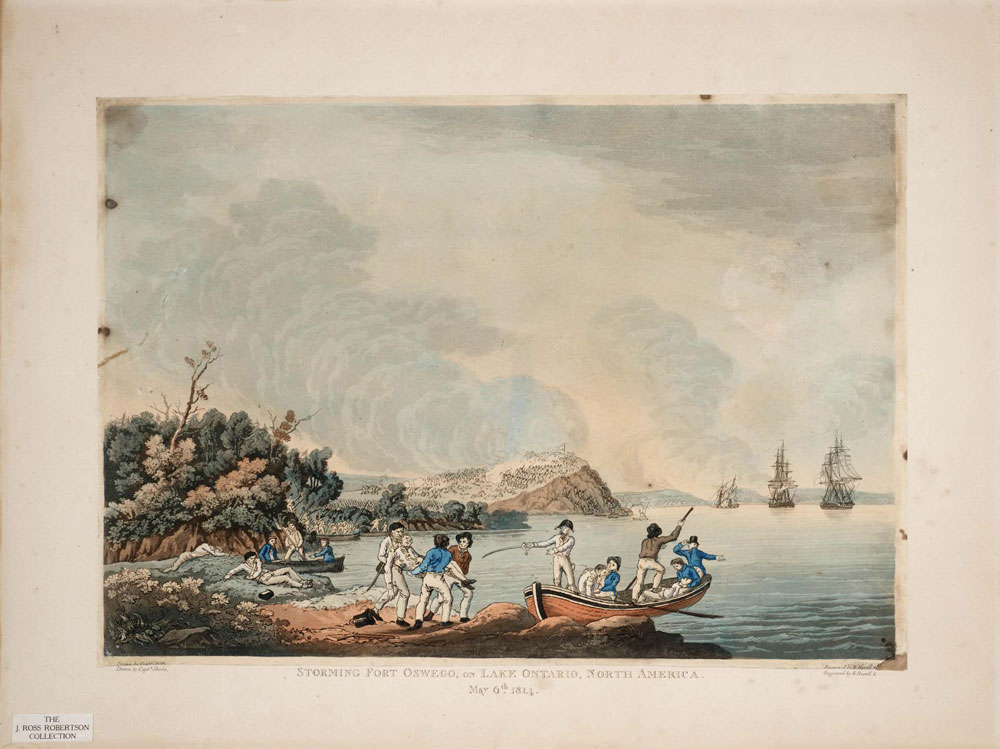The Battle of Fort Oswego
Located not far from where the Americans had seized the British troopships the previous fall, was Fort Oswego, New York. It was a key link in the supply chain for the American shipyard at Sackets Harbor. Capturing this fort would limit the ability of the Americans to build new ships on Lake Ontario.

The troops disembarking to attack Fort Oswego, under the command of Genl. Drummond and Sir T. Yeo, Lake Ontario, May the 6th 1814. Aquatint. Artist: Capt. Steele. 2d. Battalion. Royal Marines. Library of Congress.
The British force was composed of 550 soldiers, 400 Royal Marines and 200 sailors. It vastly outnumbered the 467-strong American defence force. The arrival of the British was no secret. Just as they arrived at Fort Oswego a storm blew up and drove them away from the fort. Finally, the Battle of Oswego began at 1:30 p.m. on May 6, 1813. It ended the following day with a decisive victory for the British.
Key to the British victory was the de Watteville Regiment, under the command of Col. Viktor Fischer. The regiment successfully led the attack on Fort Oswego in spite of challenges in getting ashore because of unfavourable winds, shoals and enemy gunfire. Thereafter, the de Watteville battalion, grenadier and flank companies occupied the fort and made camp. Adj. Joseph Mermet, writing in his diary, described a meal he and his troops enjoyed when they had a moment to rest from their labours:
It is 5 o’clock; we dine on the moss of the month of May. De Bersy cuts up two suckling pigs: our light infantry and the Glengarries bring us cheese and cigars. Our grenadiers found us Malaga and Madeira; we drank in a coconut, or in the hollow of our hand: what pleasure!
The regiment’s duties didn’t stop once the battle ended. With other British troops, the men loaded large quantities of supplies on to captured ships bound for Kingston and dismantled the fort. Another victory had been won due in no small part to the skill and fighting spirit of the de Watteville Regiment. The death of Gottfried Hillert in the attack cast a shadow over the Grand Duchy soldiers. But, the feelings of joy were palpable on the Prince Regent as she made her way back to Kingston in the early hours of the morning on May 7. Contemporary reports describe the scene, emphasizing the multilingual character of the revelry:
42 officers in a cabin, seated at their ease…babbling a Franco-Anglo-Italian patois (for all these naval officers have travelled around the world…how they listen; and how they sing; and how they drink! “Gentlemen, a toast: Colonel Fischer and De Watteville’s Regt. – Colonel Malcolm and the 2nd Bn. Rl. Marines – Our success – Genl. Drummond – Sir James Yeo” etc., etc., etc.


